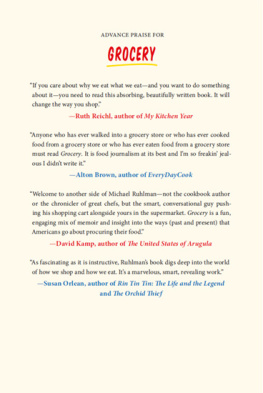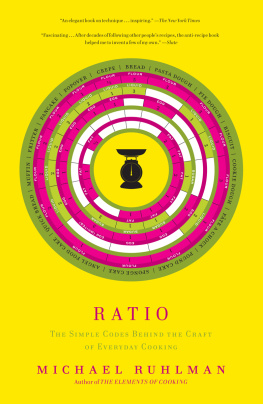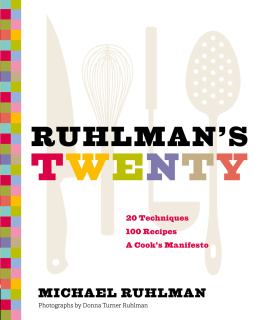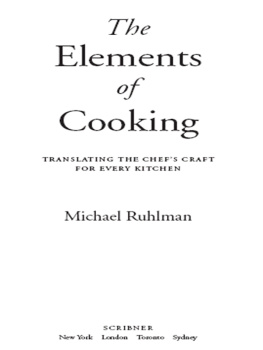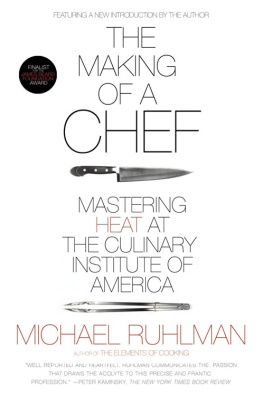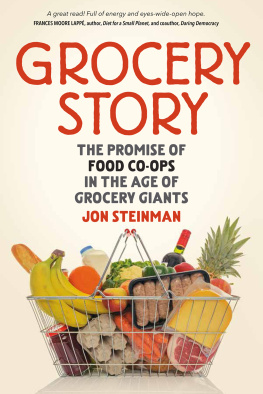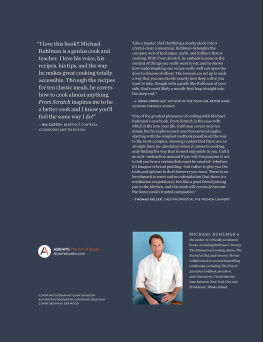ALSO BY MICHAEL RUHLMAN
NONFICTION
Ratio: The Simple Codes Behind the Craft of Everyday Cooking
The Elements of Cooking: Translating the Chefs Craft for Every Kitchen
The Reach of a Chef: Professional Cooks in the Age of Celebrity
The Soul of a Chef: The Journey Toward Perfection
The Making of a Chef: Mastering Heat at the Culinary Institute of America
COOKBOOKS
Ruhlmans How to Saut: Foolproof Techniques and Recipes for the Home Cook
Ruhlmans How to Braise: Foolproof Techniques and Recipes for the Home Cook
Ruhlmans How to Roast: Foolproof Techniques and Recipes for the Home Cook
Egg: A Culinary Exploration of the Worlds Most Versatile Ingredient
The Book of Schmaltz: Love Song to a Forgotten Fat
Ruhlmans Twenty: 20 Techniques, 100 Recipes, A Cooks Manifesto
Salumi: The Craft of Italian Dry Curing (with Brian Polcyn)
Charcuterie: The Craft of Salting, Smoking, and Curing (with Brian Polcyn)
Bouchon Bakery (with Thomas Keller and Sebastien Rouxel) Ad Hoc at Home (with Thomas Keller)
Under Pressure: Cooking Sous Vide (with Thomas Keller)
Bouchon (with Thomas Keller)
The French Laundry Cookbook (with Thomas Keller)
A Return to Cooking (with Eric Ripert)
Michael Symons Live to Cook (with Michael Symon)

Copyright 2017 Michael Ruhlman
Cover design by John Gall
Cover photo Martin Paul/Getty Images
Published in 2017 by Abrams Press, an imprint of ABRAMS. All rights reserved. No portion of this book may be reproduced, stored in a retrieval system, or transmitted in any form or by any means, mechanical, electronic, photocopying, recording, or otherwise, without written permission from the publisher.
Library of Congress Control Number: 2016941983
ISBN: 978-1-4197-2386-5
eISBN: 978-1-61312-999-9
The materials included in this book are intended only for informational purposes. Every effort has been made to ensure that the information provided is accurate and up to date, but neither publisher nor author accept any legal responsibility for any errors, omissions, or misleading statements contained herein. In addition, the trademarks that may appear in this book are the intellectual property of their respective owners and the usage herein does not constitute an endorsement.
Abrams books are available at special discounts when purchased in quantity for premiums and promotions as well as fundraising or educational use. Special editions can also be created to specification. For details, contact specialsales@abramsbooks.com or the address below.

ABRAMS The Art of Books
115 West 18th Street, New York, NY 10011
abramsbooks.com
For Miss Scarlett
And in memory of fathers weve lost
I think it could plausibly be argued that changes of diet are more important than changes of dynasty or even of religion. The Great War, for instance, could never have happened if tinned food had not been invented.... Yet it is curious how seldom the all-importance of food is recognized. You see statues everywhere to politicians, poets, bishops, but none to cooks or bacon-curers or market-gardeners.
George Orwell, The Road to Wigan Pier
It seems to me that our three basic needs, for food and security and love, are so mixed and mingled and entwined that we cannot straightly think of one without the others. So it happens that when I write of hunger, I am really writing about love and the hunger for it, and warmth and the love of it and the hunger for it... and then the warmth and richness and fine reality of hunger satisfied... and it is all one.
M. F. K. Fisher, The Art of Eating
The destiny of nations depends on how they nourish themselves.
Jean Anthelme Brillat-Savarin
INTRODUCTION:
THE INVISIBLE BEHEMOTH ON MAIN STREET
Grocery stores are where we purchase most of our food$650 billion annually at thirty-eight thousand of them in America, $1 trillion if you count all retail food salesyet most people know almost nothing about how they operate or where the food they sell comes from. We do, however, count on their always being here. While food issues drive some of the most compelling stories in the news (after national and international crises)everything from the gluten-free fad, the pros and cons of genetically modified foods, questions about foods possible impact on increasing gastrointestinal illnesses, food fanaticism, food recalls, anxiety about food expiration dates, eating disorders, the paleo diet, our $1 billion-per-day health care crisiswe remain more confused than ever by conflicting information we receive about the food we eat.
Some of this confusion can be explored and clarified by looking inside a grocery store.
The American supermarket is like no other retail store, and we use it like no other retail store, venturing out to buy groceries on average twice a week, every week, all year long, to feed ourselves. A familys biggest expense, after housing and transportation, is groceries (about 10 percent of its income). A small portion of the population grows some of their own food, but almost no one, or no family, fails to go to a grocery store each week. Its the only store most Americans have to spend money in. Those who cant get to one tend to be sicker than those who can, according to researchers who study urban and rural food deserts, places where there are no convenient grocery stores.
Grocery stores are more than just places to buy food. They are in a broader sense a reflection of our culture. During the Cold War, for instance, supermarkets were a powerful symbol. With their dizzying array of processed foods, [supermarkets] came to be regarded as quintessential symbols of the triumph of American capitalism, writes Harvey Levenstein in Paradox of Plenty: A Social History of Eating in Modern America. During the impromptu 1959 Kitchen Debate in Moscow, then vice president Richard Nixon pointed to the astonishing variety of goods available to Americans as evidence of capitalisms superiority, pooh-poohed by Soviet premier Nikita Khrushchev. The next year, however, when Khrushchev and his pals visited a San Francisco supermarket, the expression on their faces was something to behold, writes Levenstein, quoting Henry Cabot Lodge, one of the hosts.
Because they are a reflection, even symbol, of our culture, and thus a gauge of who we are, supermarkets illuminate what we care about, what we fear, what we desire. They offer a view of our demographic makeup, including how much money we have and how big the country is, not to mention how much it is changing. The grocery store describes the effects of global warming on farms from Washington down through California, the state of our oceans, and the health of our land. It is a showcase for the latest food production innovations, which is critical given the worlds escalating population. And the grocery store is at the center of broader issues of how the food we eat affects our bodies and our body politic.
All these issues, and countless others, come into focus when viewed through the American supermarket, foods last stop before it enters our homes. Though we arent often reflective or thoughtful about grocery stores, they are in truth a barometer of our countrys collective state of mind. Yet relatively little has been written about them, how they work, and what they mean.
Next page
